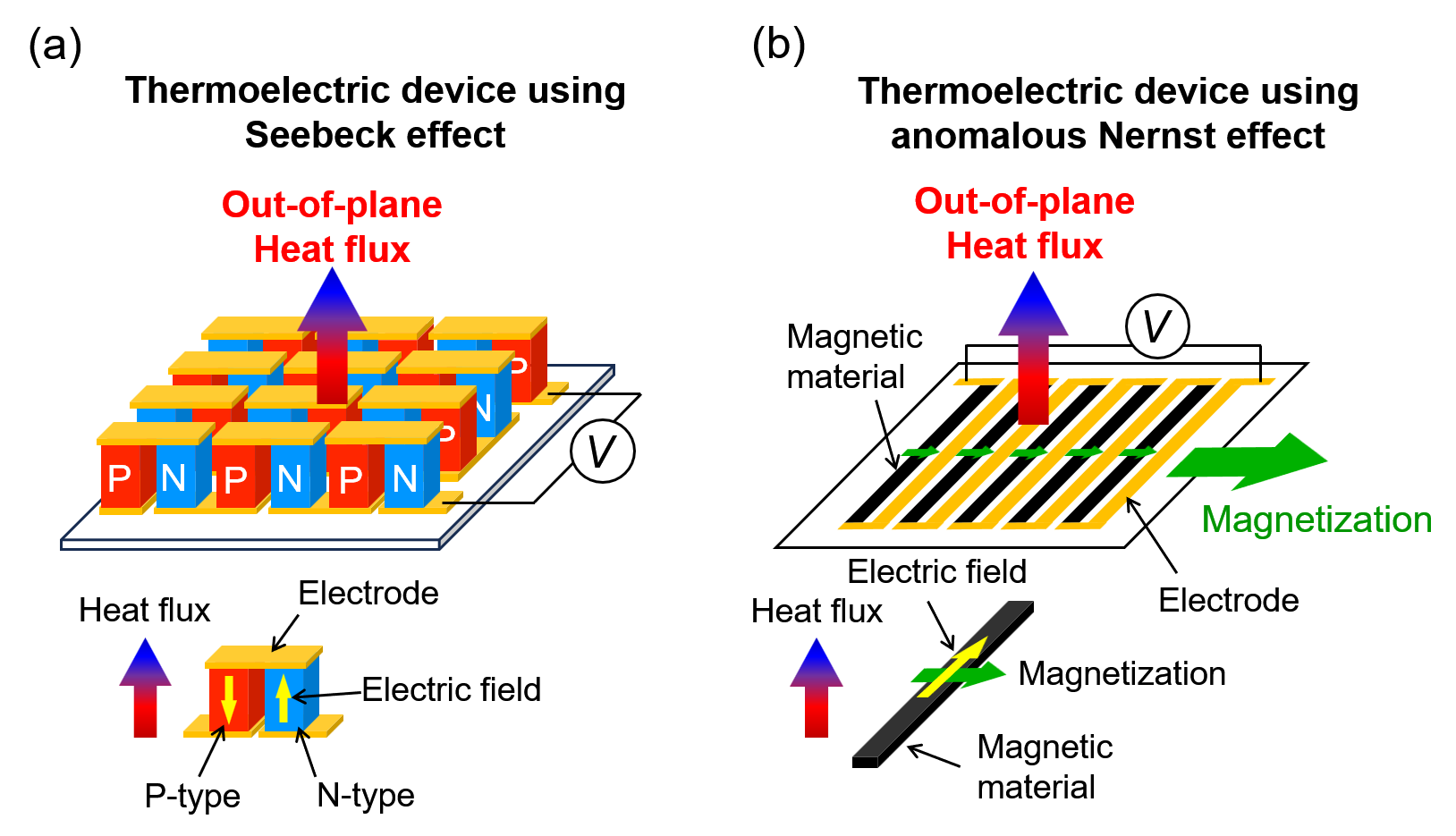DATE2024.05.28 #Press Releases
Large Spontaneous Transverse Thermoelectric Effect in Topological Kagome Ferromanget Thin Films
A New Path to High Functionality in Thin Film Thermoelectric Devices
Summary of Presentations
A research group led by Shun'ichiro Kurosawa (graduate student), Tomoya Higo (project associate professor), and Satoru Nakatsuji (professor) from the Graduate School of Science, the University of Tokyo, has fabricated thin films of the topological kagome ferromagnet Fe3Sn composed of iron (Fe) and tin (Sn) materials by a sputtering method and observed the large spontaneous anomalous Nernst effect at room temperature.
The anomalous Nernst effect (ANE) is one of the transverse thermoelectric effects and generates electromotive force perpendicular to the temperature gradient, allowing us to make a lateral device structure. Thus, it is expected that ANE enables to make a large-area and flexible thermoelectric devices with much lower costs and simpler fabrication processes, leading to the application of energy harvesters and heat flux sensors. Recent studies have shown that magnetic materials with a topological band structure can generate ten times larger ANE than conventional magnetic materials at room temperature, originating from a huge virtual magnetic field in the band structure.
Previous research have reported that the topological Kagome ferromagnet Fe3Sn, composed of the inexpensive and safe materials Fe and Sn, exhibits a giant ANE originating from a novel topological band structure, a nodal plane, and thus, it can be expected to apply this material to thermoelectric devices. On the other hand, the thermoelectric effect in thin film form have not been studied although it is essential for device fabrication. It is required to investigate the transverse thermoelectric effect in high-quality thin-film of Fe3Sn.
In this study, we have fabricated the high-quality epitaxial thin films of Fe3Sn and investigated the thermoelectric properties. The fabricated Fe3Sn thin film exhibits ten times larger spontaneous ANE than common ferromagnets such as the iron and permalloy at room temperature. This achievement is expected to lead to the development of lateral thermoelectric devices using inexpensive and safe materials.

Figure:Thermoelectric devices using Seebeck effect and anomalous Nernst effect.
Journals
-
Journal name Physical Review Materials Title of paper


